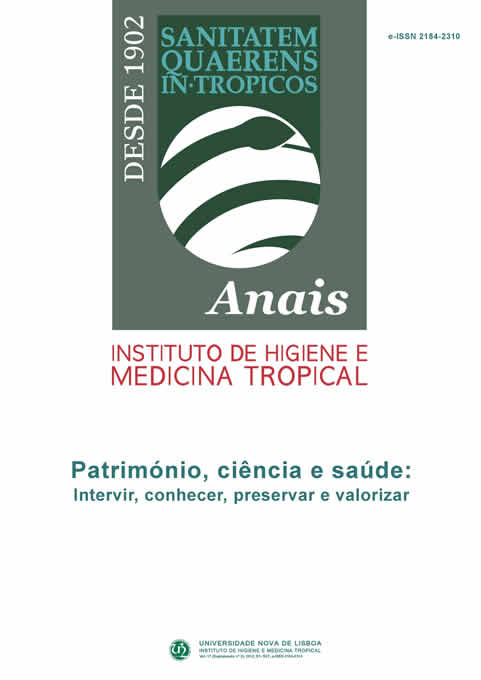A cultura visual médica no virar do século XIX: da cronofotografia aos primórdios do cinema
Resumo
O cinema permitiu a possibilidade de capturar fenómenos científicos relacionados com o movimento que, de outro modo, apenas com a fotografia e o desenho seria impossível. As técnicas cinematográficas devem muito a E. Muybridge e E-J. Marey. Marey começou a registar os movimentos dos corpos patológicos em 1888, através da cronofotografia, identificando funções biológicas como fenómenos mecânicos e realizando filmes sobre a fisiologia do corpo. A partir de 1897, vários médicos começaram a usar o cinematógrafo como ferramenta para a investigação e ensino. Em 1897 John Macintyre dirigiu filmes, combinando as duas técnicas, cinema e raios-X. Um dos primeiros cientistas a produzir um filme microcinematográfico foi Julius Ries, que trabalhou no Instituto Marey. O cinema médico foi também exibido em reuniões científicas. Foi o caso do cirurgião Doyen, um dos primeiros a dirigir filmes ilustrando técnicas cirúrgicas. Alguns dos seus filmes, identificados e restaurados na Cinemateca Portuguesa, foram projetados em reuniões científicas, como o Congresso Internacional de Medicina e Cirurgia de Lisboa (1906). O neurologista Egas Moniz usou o cinema para medir o tempo entre os movimentos de contração produzidos pela patologia neurológica, mioclonias. Nesta investigação examinamos o papel do cinema como método de representação pictórica e estudo experimental em medicina.
Downloads
Referências
Tosi V. Cinema before Cinema: The Origins of Scientific Cinematography. London: British Universities Film Publication; 2015.
Dercum FX. The walk and some of its phases in disease. Transactions of the College of Physicians of Philadelphia 1888; 10: 308-338.
Jardim ME. Fotografia do Invisível: Fotomicrografia. In: Costa F, Jardim ME, editores. 100 Anos de Fotografia Científica em Portugal (1839-1939) - Imagens e Instrumentos. Lisboa: Edições 70; 2014. p.151-174.
Comandon J. Le cinématographe, instrument du laboratoire. Bulletin de la Société Française de Photographie 1921; 7: 91-95.
Ramsey L. Early cineradiography and cinefluorography. History of Photography 1983; 7(4): 311-322.
Moniz E. Confidências de um investigador científico. Lisboa: Ática; 1949.
Sousa A. Génese e evolução da angiografia: A propósito do cinquentenário da descoberta de Egas Moniz. Lisboa:[s. n.]; 1978.
Santos R. L’Artériographie en série. Bulletins et Mémoires de la Société Nationale de Chirurgie. Séance du 4 Janvier 1933; 59: 35-39.
Baptista T. Il faut voir le maître. Journal of Film Preservation 2005; 70: 42-50.
Boletim da Academia de Ciências de Lisboa, Sessão de 18 de julho de 1935. 1935; 7: 298-301.
Marinescu G. Les troubles de la marche dans l’hemiplégie organique étudiés à l’aide du cinématographe. Semaine Médicale 1899; 19: 225-228.
Aubert G. Arthur Van Gehuchten takes neurology to the movies. Neurology 2002; 59(10): 1612-1618.
Moniz E. Myoclonies essentielles. Nouvelle Iconographie de la Salpêtrière 1913; 26: 85-117.
Koehler PJ. Early Neurological Films at Medical Congresses. World Neurology 2013; 28(2): 11.
Matuszewski B. A new source of history. Film History 1995; 7: 322-324.

This work is licensed under a Creative Commons Attribution 4.0 International License.





